
Matsuyama Castle stands proudly atop a hill amidst vast plains, featuring the Honmaru fortress at its summit, while the Ninomaru and Sannomaru reside at its base. Stone walls over the mountain slopes gracefully traverse from the Ninomaru to the Honmaru, with the southern wall retaining its pristine condition. Shiroyama Park, encompassing Horinouchi, holds the distinction of being a national historic site, boasting 21 buildings designated as Important Cultural Properties. Renowned for its captivating night vistas of the cityscape and enchanting cherry blossom displays, it remains a cherished destination.
Impregnable Matsuyama Castle
sourced from Iyo Shidankai
Exploring the Majesty of Matsuyama Castle
Matsuyama Castle stands out with its castle Tenshu (main tower) and stone walls subtly emerging from the lush peaks of Matsuyama. This vast domain, sprawling across the entire mountain, was masterfully crafted by Kato Yoshiaki, creating an unparalleled castle experience.
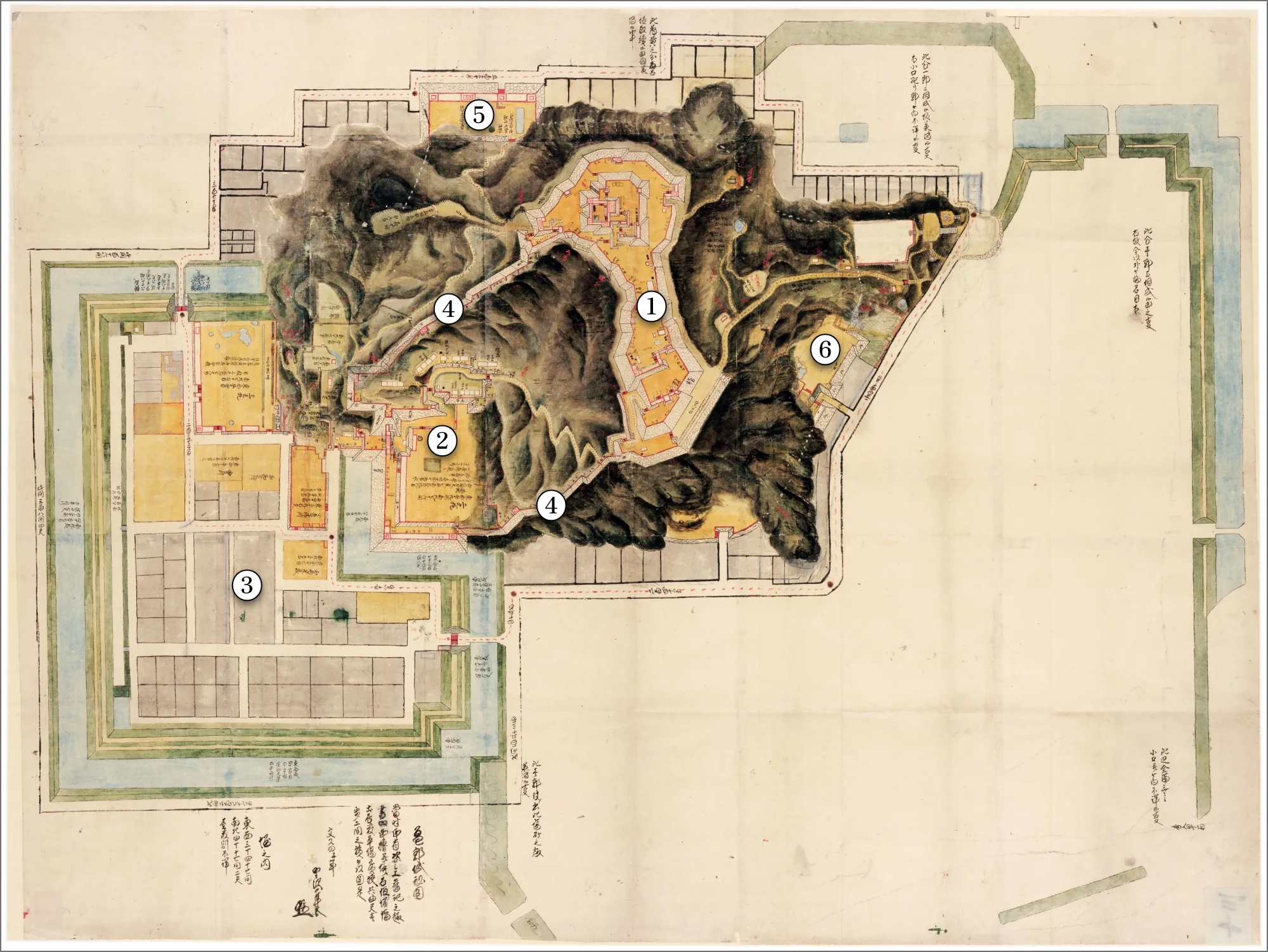
sourced from Iyo Shidankai
Construction on Matsuyama Castle commenced in 1602 under the leadership of Kato Yoshiaki, a distinguished warlord recognized as one of the Seven Spears of Shizugatake. The arduous endeavor spanned a quarter of a century.
Kato Yoshiaki, renowned for his expertise in siege warfare, meticulously designed a stronghold in Matsuyama tailored for practical defense. The layout of the castle included the following key features: the Honmaru ① situated atop the mountain summit, the Ninomaru ② and Sannomaru ③ positioned at the southwestern base, all encircled by water moats and earthworks. The castle’s extensive domain enveloped the entire mountain, fortified with tiers of stone walls, gatehouses, and watchtowers lining the winding approach roads. Additionally, two sets of ④formidable stone walls over the mountain slopes flanked the northern and southern sections of the path linking the Honmaru and Ninomaru, further bolstering the castle’s defenses.
HonmaruMatsuyama Castle
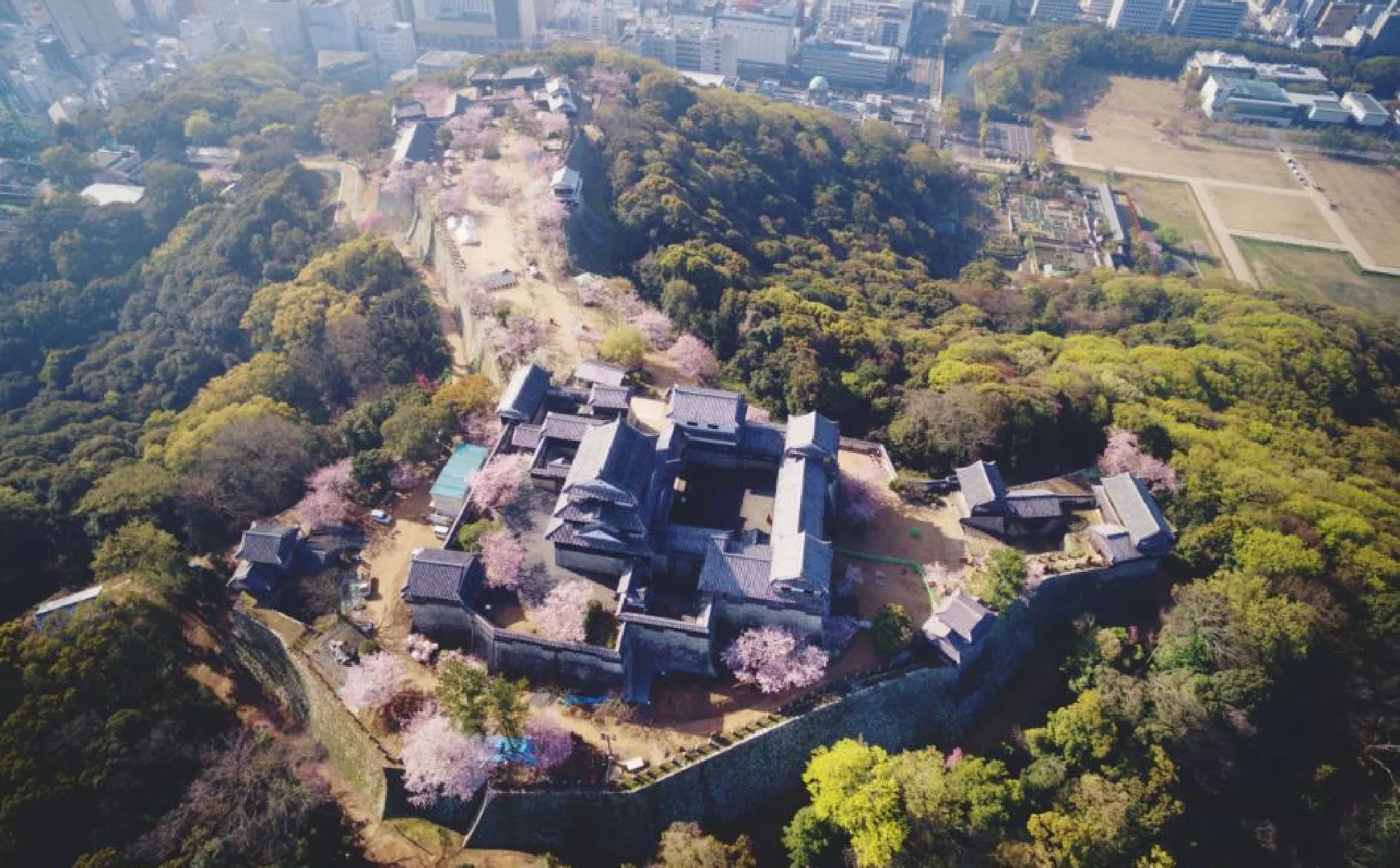
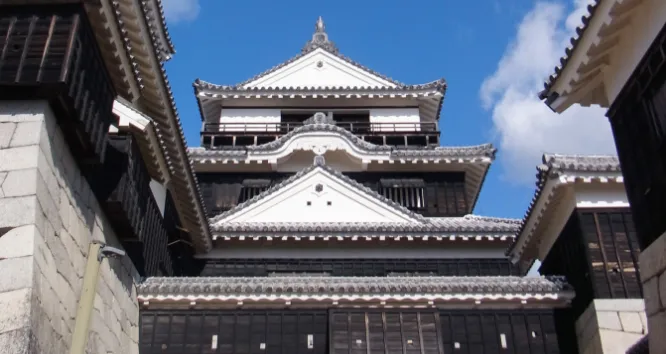
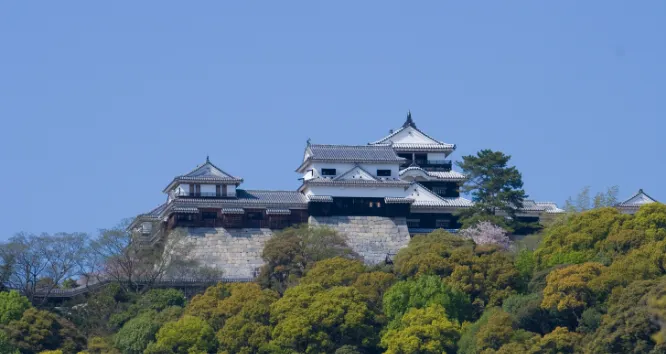
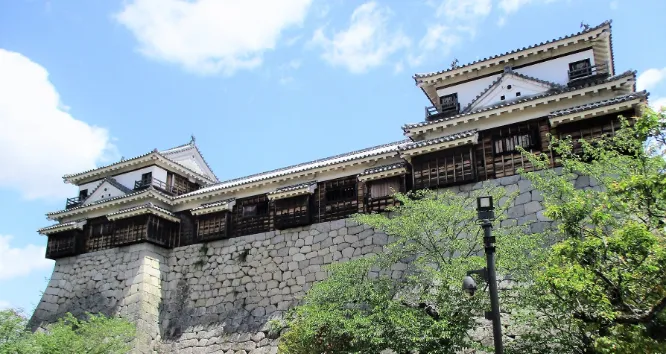
Matsuyama Castle’s interconnected main towers represent a remarkable architectural achievement, being among the final structures of their kind constructed in Japan at the close of the Edo period. They exemplify the tiered tower type keep, crafted with the architectural aesthetics prevalent during the early Edo period.

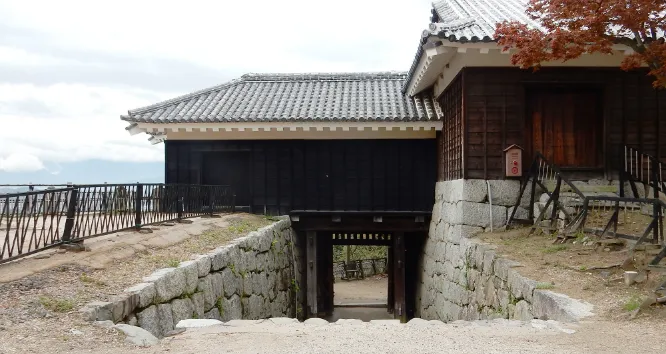

NinomaruNinomaru Historic Site Garden
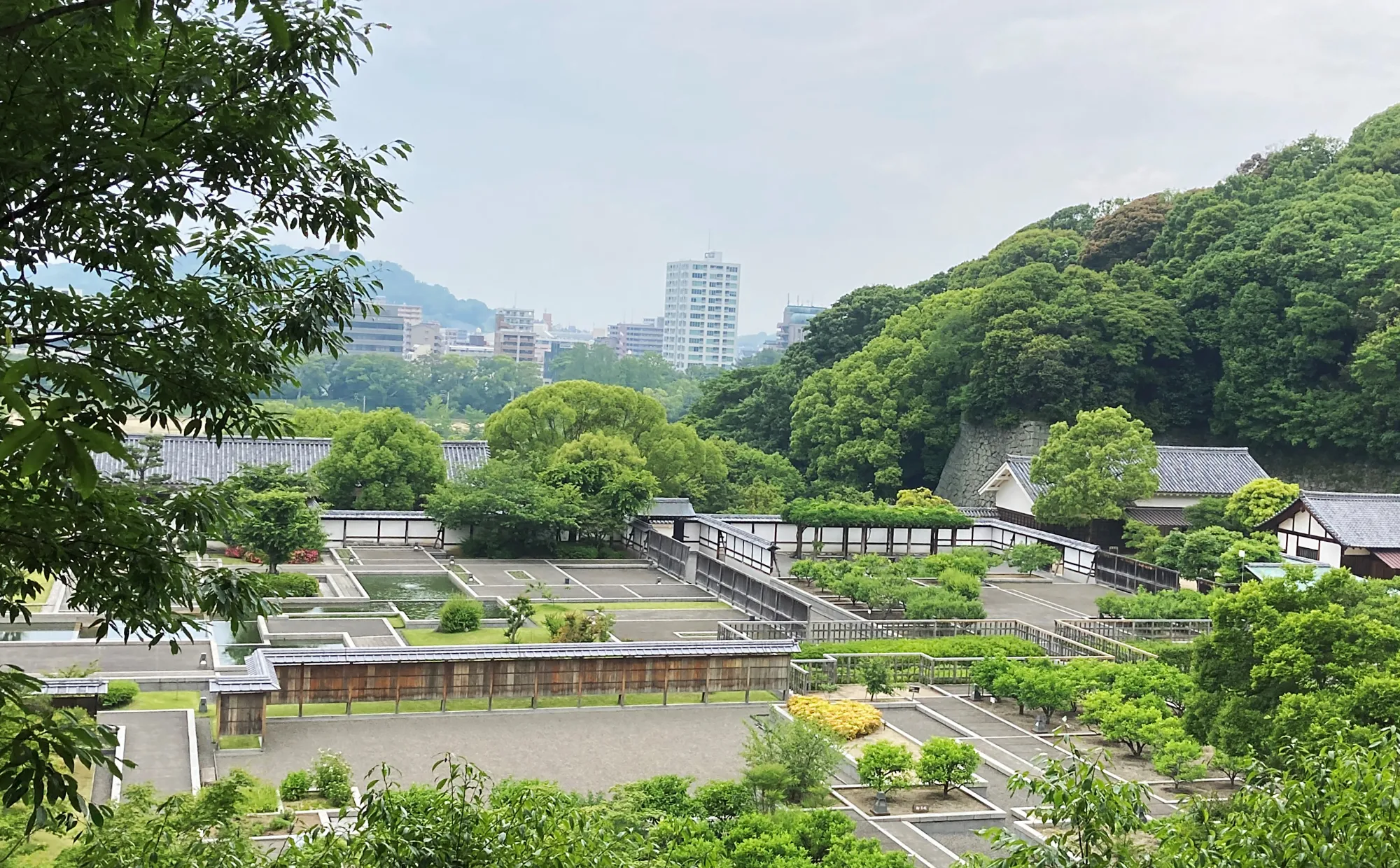
Ninomaru Historic Site Garden at Matsuyama Castle is divided into two distinct sections: the Omote-goten site and the Oku-goten site. The Omote-goten site occupies the northern portion of the garden and features a vibrant citrus and flora garden, or Kankitsu-Kusabanaen. This area meticulously recreates the layout of rooms from bygone eras, adorned with various types of citrus and flora plants. In contrast, the Oku-goten site is situated in the southwestern quadrant and serves as a tranquil water garden, or Ryusuien . Here, water, gravel, and grass combine to evoke the ambiance of traditional room layouts. On the eastern side, the tree and pond garden, Rinsentei, epitomize the aesthetic principles of “wabi” and “sabi.” Ponds and waterfalls harmonize with exposed rocks, creating a serene and contemplative atmosphere.
Of particular note is the remains of a large well, preserved in its original state since excavation. Its remarkable scale and size have garnered significant attention, offering visitors a glimpse into the past.
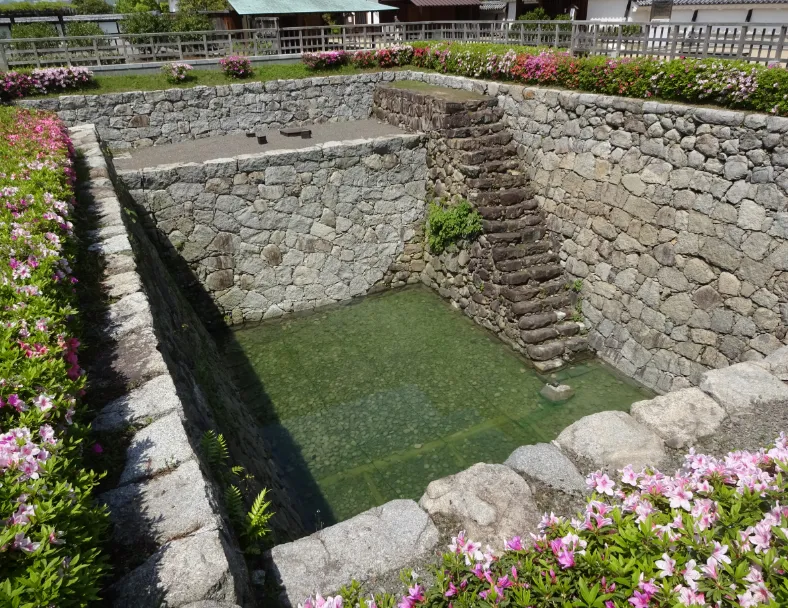
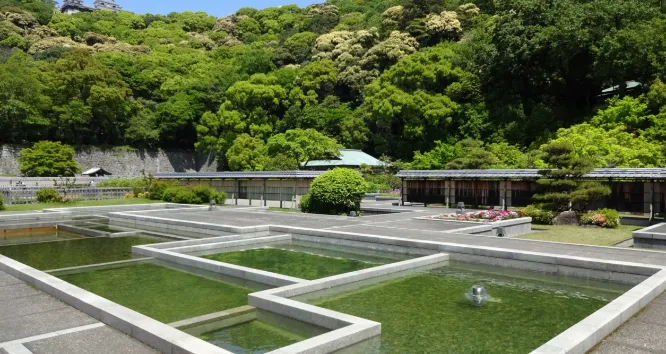
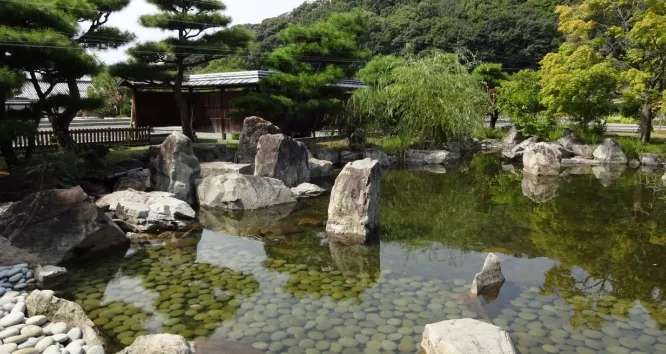

SannomaruShiroyama Park (Horinouchi District)
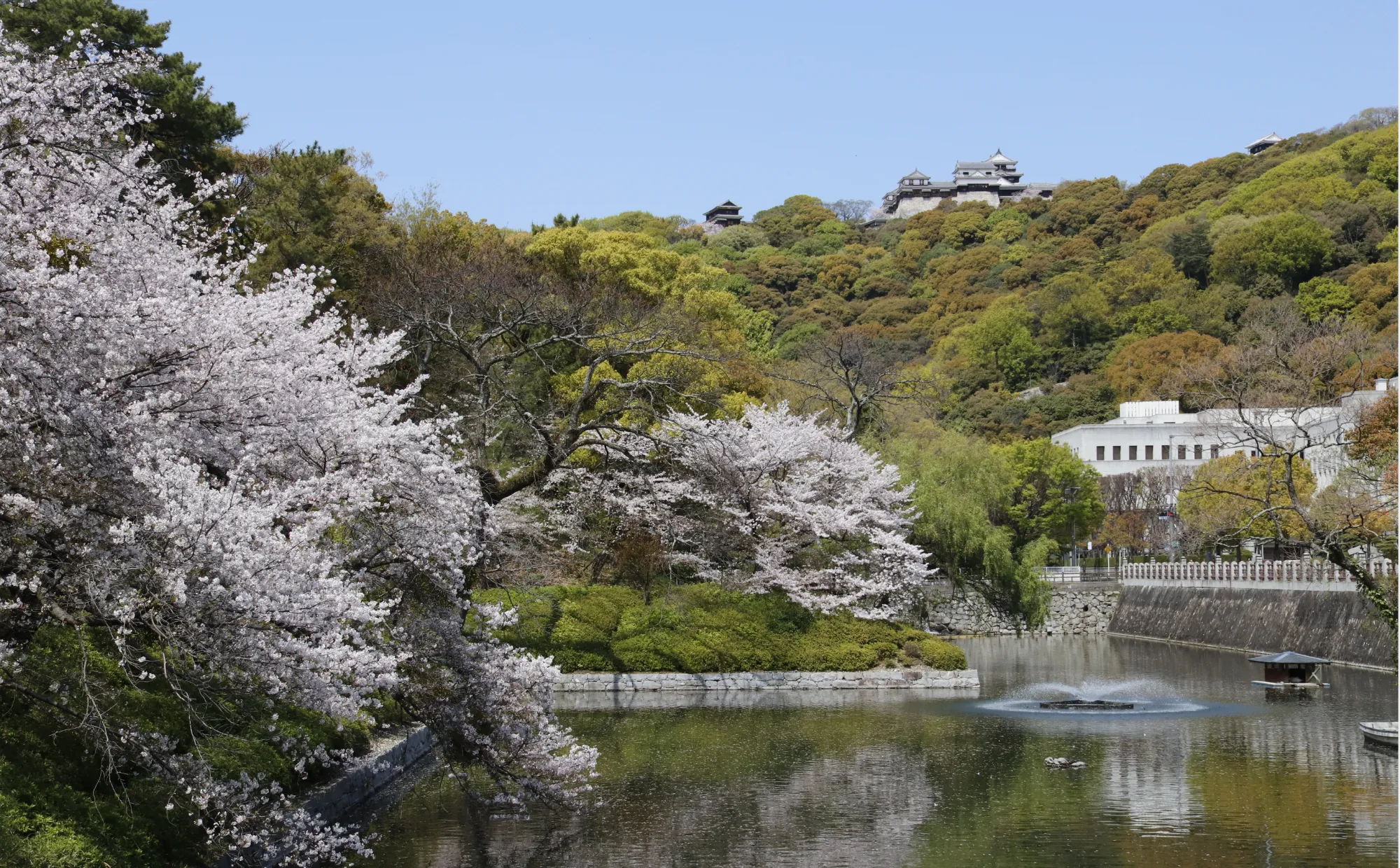
The Sannomaru served as the focal point for clan administration, housing the lord’s palace, the dwellings of prominent vassals, and facilities dedicated to political affairs. While parts of the area have undergone reclamation over time, it’s worth noting that during the castle’s initial construction, nearly the entire expanse was encircled by a protective water moat.

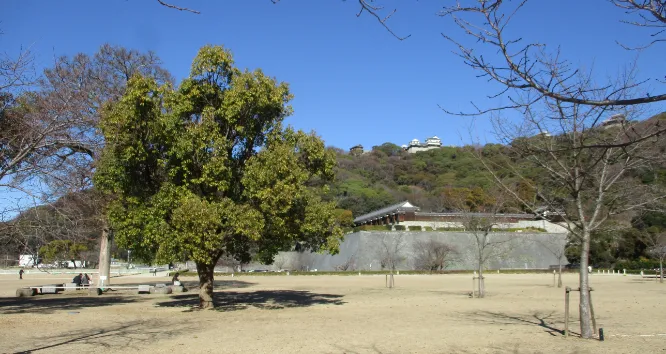
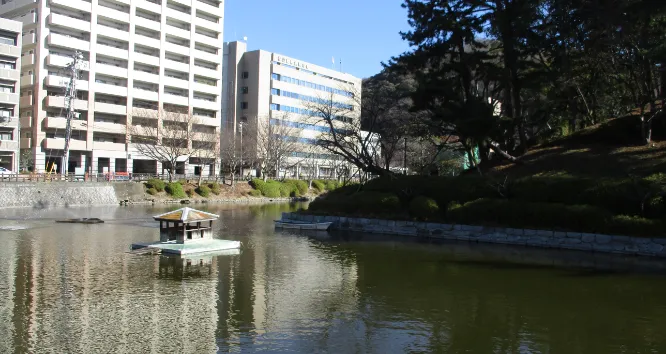
Hours
Matsuyama Castle Tenshu (Main Tower)/Ninomaru Historic Site Garden
9:00 a.m. - 5:00 p.m.
Closures: Third Wednesday in December (for thorough cleaning)
- August: Until 5:30 p.m.
- December/January: Until 4:30 p.m.
Shiroyama Park (Horinouchi District)
24 hours
No closures
Cable Car
8:30 a.m. - 5:30 p.m.
No closures
- August: Until 6:00 p.m.
- December/January: Until 5:00 p.m.
Chairlift
8:30 a.m. - 5:00 p.m.
No closures
*Non-operational on rainy days.
Fees
Matsuyama Castle Honmaru Square
Free
Matsuyama Castle Tenshu (Main Tower) Admission Fees
| General | Matsuyama Castle Tenshu (Main Tower) Admission Tickets |
|---|---|
| Adults | ¥520 |
| Children (elementary school students) | ¥160 |
Admission Fees to Matsuyama Castle Tenshu (main tower) is free for the following:
- Children under elementary school age when accompanied by a parent or guardian (up to 2 persons)
This offer is not applicable when using group discounts.
Cable Car/Chairlift Fees
| Type | Adults | Children |
|---|---|---|
| Round-trip ticket | ¥520 | ¥260 |
| One-way ticket | ¥270 | ¥140 |
- Chairlift rides are open to elementary school students and older.
- As tickets are shared, you have the flexibility to select your preferred ride.
- Dogs are permitted to ride the cable car if they are in a carrying case. For the chairlift, you may hold your dog while riding.
- Matsuyama Castle Cable Car Shinonome -guchi Station operates from 8:00 a.m. until the last cable car service of the day.
Cable Car/Chairlift fee is free for the following:
- Children under elementary school age when accompanied by a parent or guardian (up to 2 persons)
This offer is not applicable when using group discounts.
Ninomaru Historic Site Garden Admission Fees
| Type | Adults | Children (elementary school students) |
|---|---|---|
| Fees | ¥200 | ¥100 (for children aged 6 - 12) |
Admission Fee to Ninomaru Historic Site Garden is free for the following:
- Children aged 5 or younger when accompanied by a parent or guardian (up to 2 persons)
Available Payment Types and Details
| Types | Details |
|---|---|
| Credit Cards | VISA, Mastercard, JCB, AMEX, Diners, DISCOVER, UnionPay |
| Debit Cards | Regular debit cards |
| Electronic Payments | IC cards (Suica, ICOCA, PASMO, toica, nimoca, SUGOCA, manaca, Kitaca, Hayakaken) iD, Rakuten Edy, WAON, nanaco, QUICPay machica |
| QR Codes | Alipay, WeChatPay, LINE Pay, au PAY, Yucho Pay, MICAN App |
- Chojaganaru (summit side) accepts cash payments only; contactless payments are not supported.
